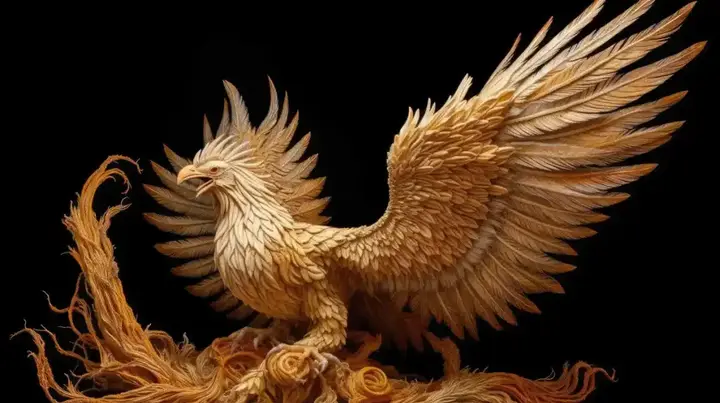The legend of the phoenix bird - Arab fiction or Western myth?
The phoenix is mentioned as one of the three impossibilities in ancient Arabic proverbs. In fact, this particular mythical creature was mentioned in many stories in various civilizations in the ancient world. The legend of the phoenix bird is one of the oldest and most famous legends in the world, as its image and symbolism have appeared in different civilizations and cultures through the ages.
Show key points
- The legend of the phoenix is one of the oldest and most enduring myths, appearing in numerous ancient civilizations including Greek, Egyptian, Arabic, and Chinese cultures.
- In ancient Arabic proverbs, the phoenix is considered one of the three impossibilities, highlighting its mythical and unattainable nature.
- The origin of the phoenix myth is mysterious and unknown, with no civilization holding exclusive claim to its beginnings.
- ADVERTISEMENT
- Despite the lack of scientific evidence for its existence, the phoenix symbolizes hope, rebirth, and triumph over adversity across cultures.
- In Greek mythology, the phoenix is described as a magnificent, sun-related bird that burns itself and regenerates from its ashes, symbolizing immortality.
- Ancient Egyptians associated the phoenix with the sacred bird "Banu", linking it to the sun and eternal life, with depictions found in temple murals.
- The myth of the phoenix continues to inspire modern art, literature, and society, due to its powerful themes of renewal and human resilience.
It is found sometimes in the mythology of Greece, sometimes in ancient Egypt, and even extended in the far east where Chinese civilization is.
Today, we learn together about the origin of this myth as one of the Arab myths, or is it a multicultural myth?
What is the origin of the legend of the Phoenix?
Recommend

The origin of the legend is so mysterious and ancient that no one knows its history!
We see many civilizations say that this bird is part of their creation or was an important element in their mythology, and other symbolism.
It is important to note that it is a mythical being, for which there is no scientific evidence for its existence. But his story has been alive through the ages, symbolizing hope, renewal and victory over death. Finally, it can be said that the origin of the myth is a mixture of different cultures and civilizations, and this myth embodies lofty human values that continue to inspire us to this day.
Over time, the symbolism of the Phoenix evolved to include deeper meanings, and this was its most prominent feature in Western civilization.
Eternity and Renewal: The ability to regenerate from the ashes is a symbol of immortality and rebirth.
Beauty and strength: It is described as a beautiful bird with colorful plumage and strong wings, making it a symbol of strength and beauty.
Triumph over adversity: His ability to rise again after death is a symbol of hope and the ability to overcome adversity.
The legend of the phoenix bird is still alive to this day, used as a symbol in the arts, literature and society. This myth inspires us with its capacity for renewal and hope, and reminds us of man's ability to overcome difficulties and rise again.
Phoenix in ancient civilizations

The phoenix of the Greeks
The phoenix is mentioned in the writings of Herodotus and Pelenius, specifically in Greek mythology, the phoenix bird is known as "Phoenix". They described it as a huge bird with colorful feathers and golden beak, living for thousands of years. They stated that the phoenix builds its nest from the branches of a stick and then sets it on fire with a sacred fire from the sun, and burns in it to be reborn from its ashes.
The legend of the Phoenix inspired many Greek artists and writers. Images of the phoenix appeared in Greek art, such as frescoes, statues, and coins.
The Greeks used the symbol of the phoenix in many fields, such as religion, philosophy, and politics.
The myth of the phoenix spread to other civilizations, such as the Egyptian civilization and the Arab civilization, where its symbolism evolved to include deeper meanings.
Phoenix in the ancient Egyptian civilization
The phoenix bird is associated with the bird "Banu" sacred in the ancient Egyptian civilization, which was a symbol of immortality and the sun, and "Banu" appears on the murals of Egyptian temples, and some scholars linked its name to the Egyptian word "Ben", which means "height".








